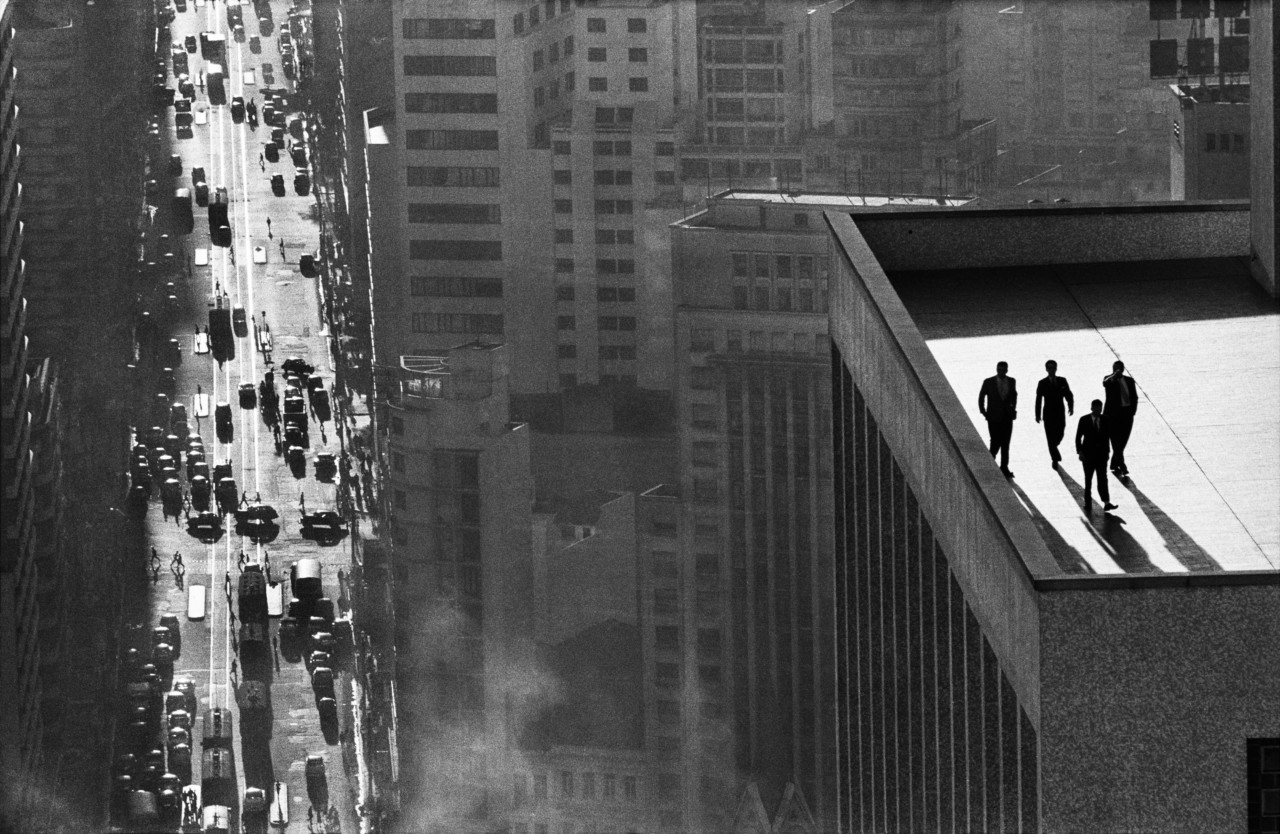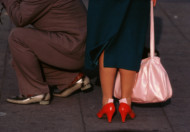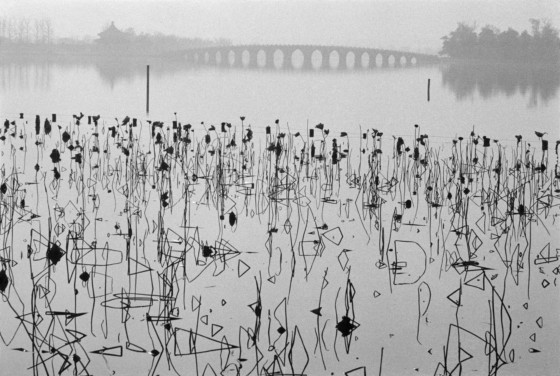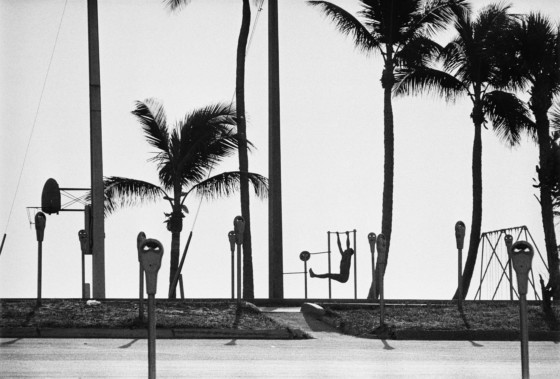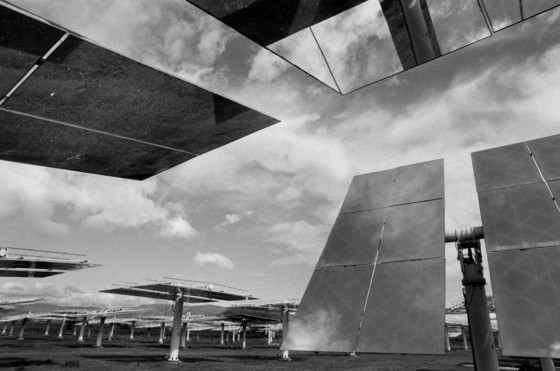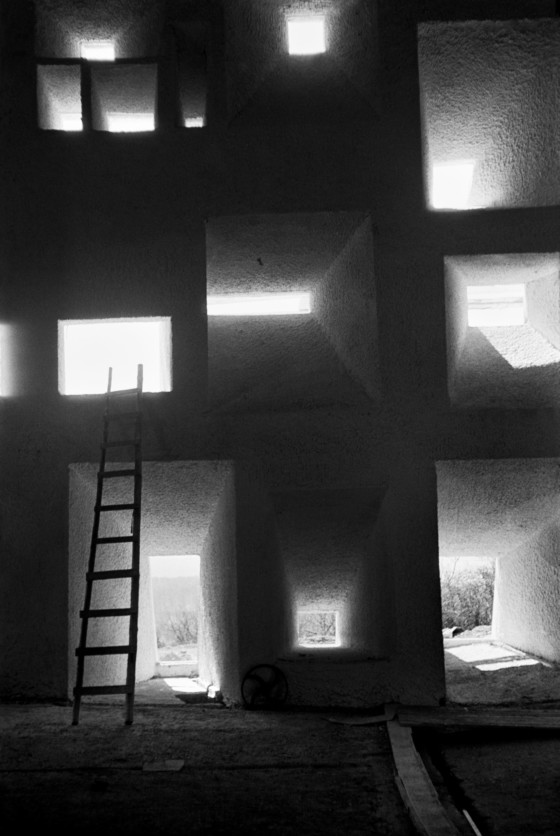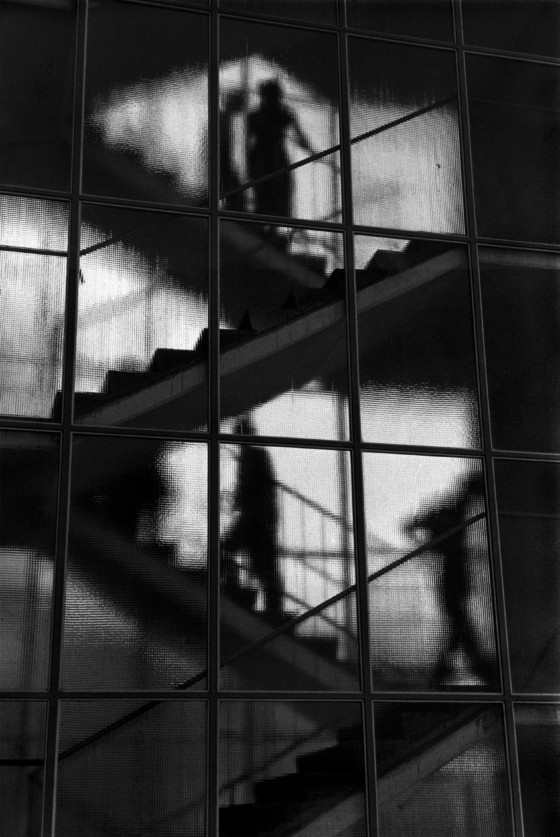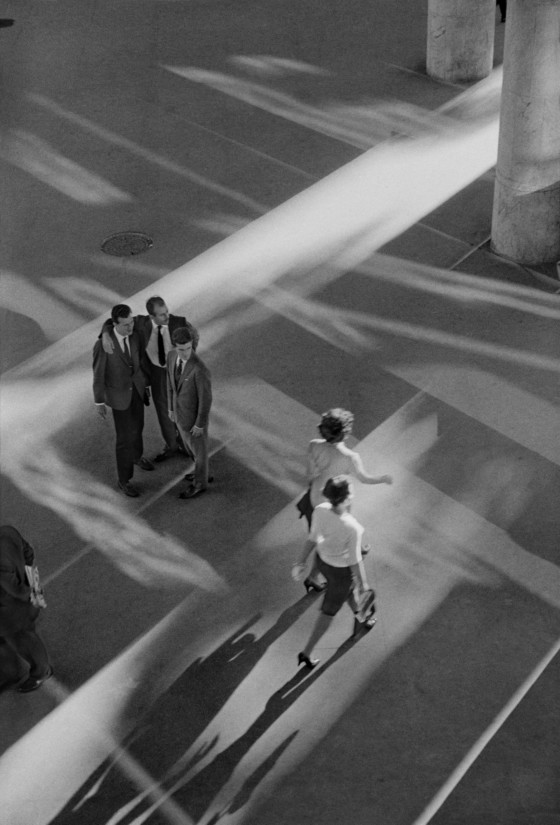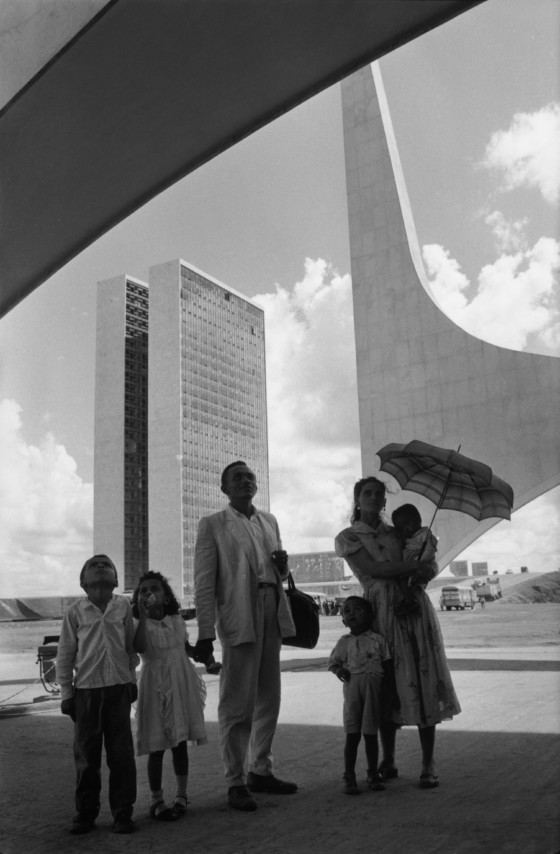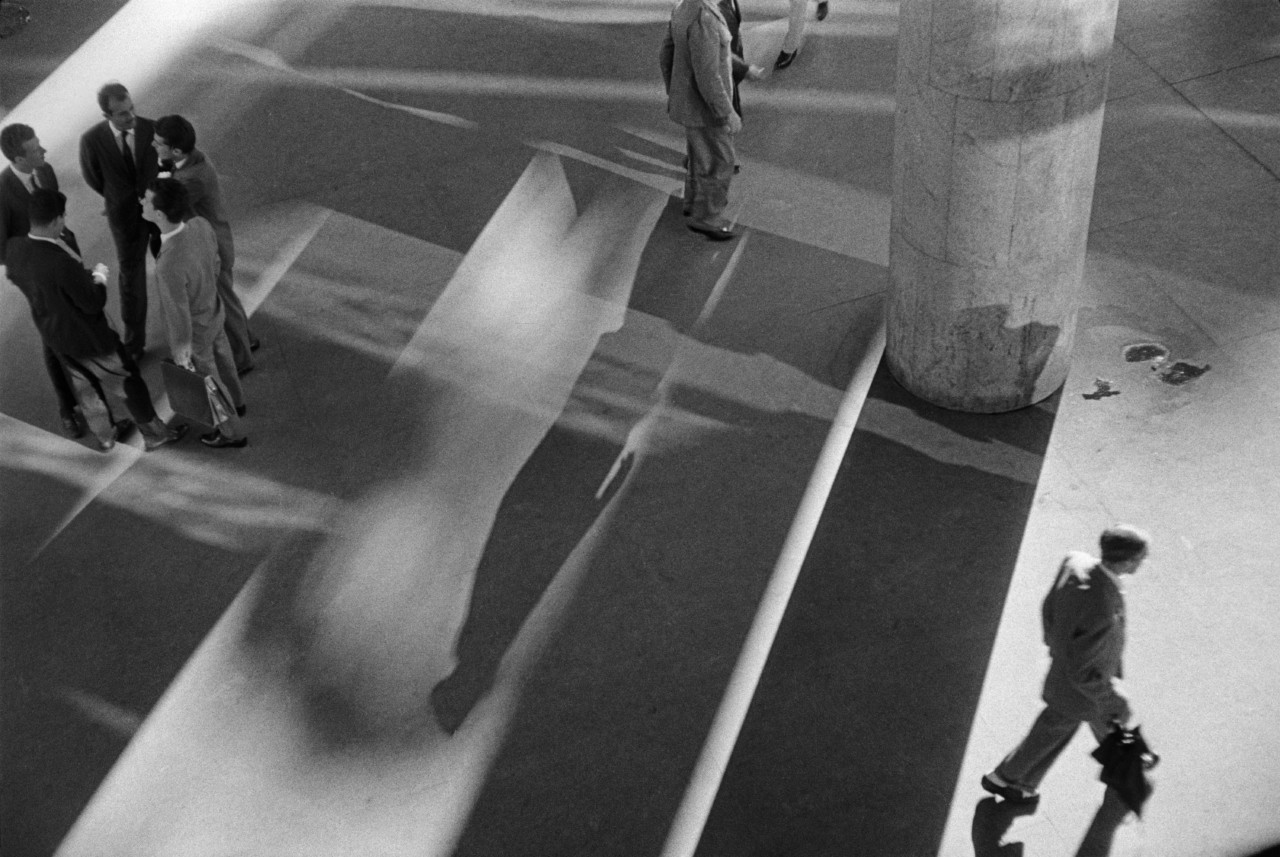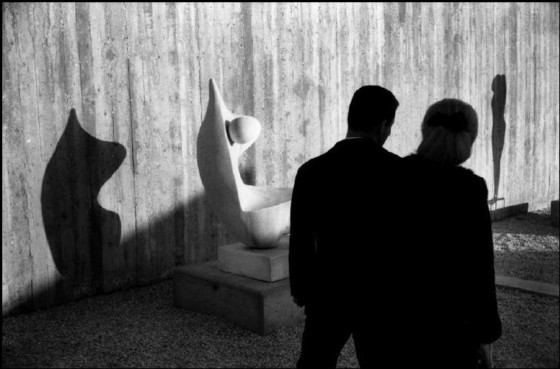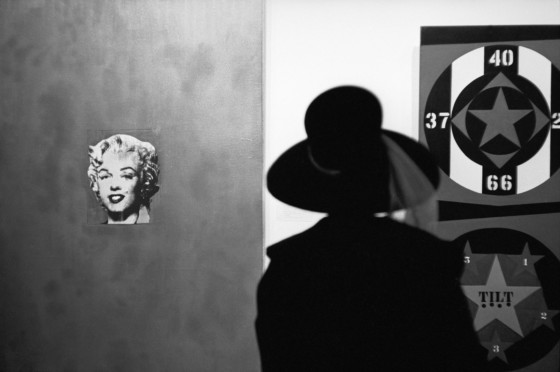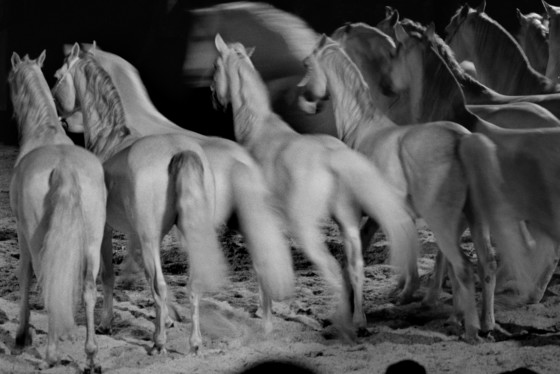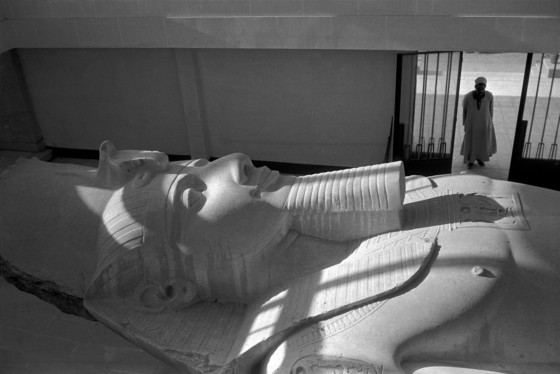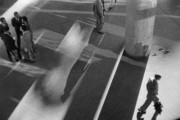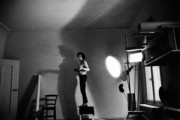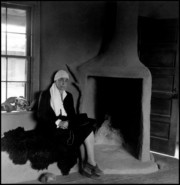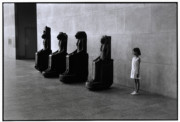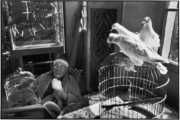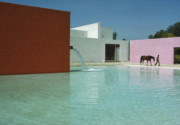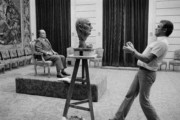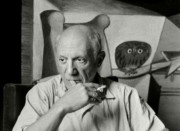A Modern Eye
The assistant curator of photography at Tate Modern shares her fascination with the work of René Burri
Shoair Mavlian, assistant curator of photography at Tate Modern, shares her fascination with the work of René Burri, as published in Black and White Photography magazine‘s January Issue. The work of René Burri is part of the Tate’s permanent collection, and four of his pieces are currently on display at Tate Modern, part of Level 4: Media Networks – permanent displays.
Without a doubt one of the highlights of my job is the opportunity to meet and work directly with artists. In late 2012, when I was relatively new to the role, I was lucky enough to visit René Burri at his studio in Paris. This experience of seeing a lifetime of work laid out in his studio was an encounter I will never forget. René Burri was born in Switzerland in 1933 and studied filmmaking at the school of Applied Arts in Zurich before embarking on a career in photography that spanned more than six decades. In 1955 Burri, a young photographer just starting out, was introduced to members of the recently founded co-operative Magnum Photos through fellow Swiss photographer Werner Bischof. Following Bischof’s introduction, Burri began working with Magnum, first as an associate then becoming a full member in 1959. As a member of Magnum, Burri witnessed and documented many key political and cultural events of the second half of the 20th century.
Looking back over such a long and esteemed career, what fascinates me about Burri’s work is the variety of his practice: images taken in Brazil, Egypt, Lebanon, Berlin and Mexico at different moments throughout the 20th century show an interest in the idea of an expanded approach to documentary practice that goes beyond trends seen in other photojournalism at the time. This wider approach is highlighted by the way he bridged gaps between documentary, reportage and the photo essay, alongside portraiture, architecture and landscape. The key to this diversity of imagery, geography and subject matter lies in the way in which Burri was able to work on press commissions and personal projects simultaneously – a skill he honed over many years while travelling on assignment.
"images taken in Brazil, Egypt, Lebanon, Berlin and Mexico at different moments throughout the 20th century show an interest in the idea of an expanded approach to documentary practice that goes beyond trends"
- Shoair Mavlian
Like many photographers with long and diverse careers, in the final years of his life Burri looked back at his work and selected 27 images which he printed and editioned as a portfolio which is now part of the Tate collection. Burri is perhaps best known for his iconic images of Che Guevara taken in Havana in 1963 and, although the portfolio includes a version of this iconic work, it also includes many rarely seen photographs – taken in both colour and black & white – which when viewed as a whole showcases the true diversity of Burri’s practice. In June this year for the launch of the new Switch House at Tate Modern we rehung the entire museum, installing a range of new collection displays. Within this new rehang we installed a group of work from Burri’s Portfolio, 2014. In a room titled Modern Times, Burri’s images of the Suez Canal in Egypt and of newly constructed modernist architecture in Brazil hang alongside works by Umberto Boccioni and Pablo Picasso depicting new perspectives of the modern world.
"Burri’s images related to architecture and modernity are among some of my favourites"
- Shoair Mavlian
Burri’s images related to architecture and modernity are among some of my favourites, particularly his ongoing engagement with the acclaimed modernist architect Oscar Niemeyer in Brazil. Burri returned to Brazil over a period of several years throughout the 1950s and 60s, photographing the urban centres of Sao Paulo and Rio. He also worked on an ongoing project documenting the construction of the capital Brasilia, focusing firstly on its planning and construction, following the project through to the inauguration day, and finally the function and use of these new radical architectural spaces in everyday life. In these photographs Burri utilises the harsh sunlight reflecting off the large concrete surfaces to capture patterns of light and shadow reminiscent of modernist photographers in the early 20th century. However, as well as this formal approach, Burri manages to capture the vibrancy and excitement of a country in transition that is optimistic and looking forward to the future. Having the work of such an iconic photographer integrated into the Tate Modern collection displays is an important part of the museum’s new approach to photography and something that we hope to continue for many years to come.


